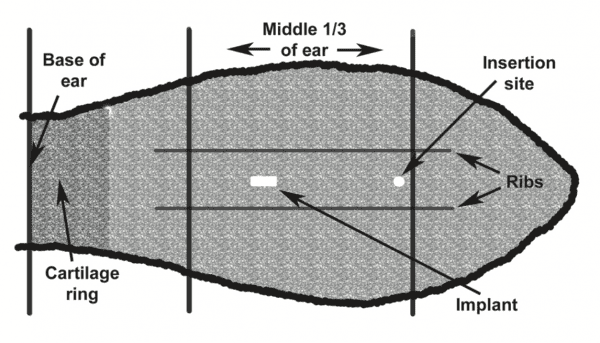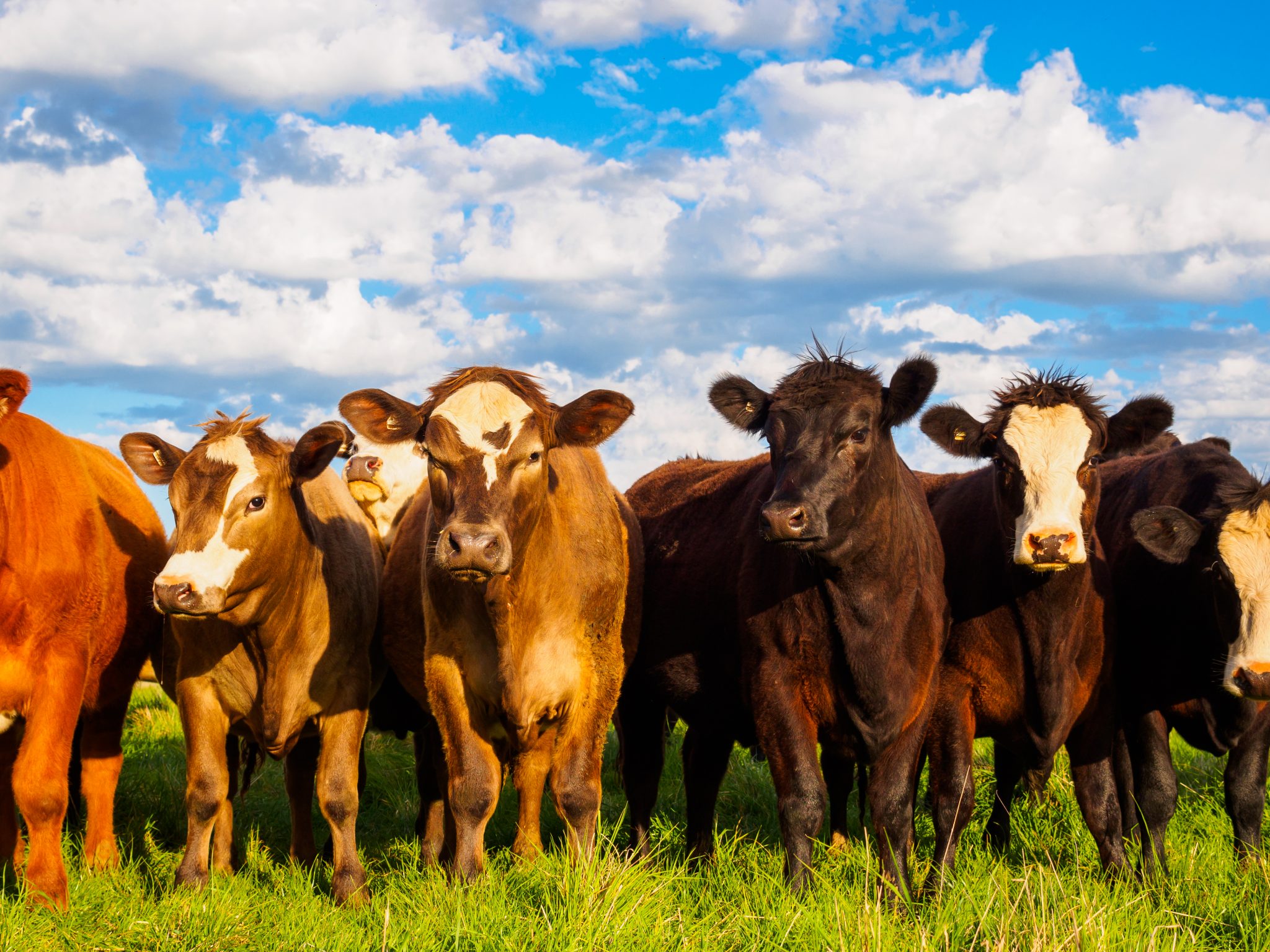Beef

Growth-stimulating implants offer cattle producers a proven, easy-to-use method for increasing the weight of calves when applied correctly and with adequate nutrition.
Growth stimulants exert a positive effect in cattle by increasing a calf’s natural production of growth hormone and insulin, resulting in increased formation of muscle tissue and decreased fat deposition. Growth stimulants typically are made of a compressed powder that is formed into small pellets and implanted under the skin on the back of a calf’s ear. Proper use of implant strategies is shown to safely improve animal growth and performance.
Considerations Before Selecting an Implant Program
Growth-stimulating implants are specifically designed to be used in cattle of a certain sex, age, and/or stage of production. Some products are designed to work best in nursing calves, while others are targeted toward optimizing growth in either stocker or feedlot cattle. Be certain to select the correct implant based on these production factors. Also note that different brands of implants may require a specific applicator or implant gun to properly administer the product.
Male calves generally should be implanted when they are castrated; however, do not implant bull calves that are intended for future breeding. Implanting bulls can disrupt the normal development of reproductive organs, thus causing the bulls to be less fertile. Likewise, replacement heifer reproductive development can be negatively affected by improper application of growth- stimulating implants.
To get the full benefit of implants, always read and follow the FDA-approved product label and manufacturer’s recommendations prior to use, adhere to all other Beef Quality Assurance guidelines, and provide adequate nutrition. The potential benefit of implants cannot be fully realized without proper administration. A calf with an improperly placed implant runs the risk of having drug residues when slaughtered. In addition, the benefit of implants will be minimized or not realized at all without adequate nutrition to support the extra growth.
While growth-stimulating implants have proven to be a beneficial tool in beef production for many years, you should make sure that the use of implants fits into the cattle marketing plan for your operation. Cattle operations selling calves based solely on weight and performance can benefit from a properly administered and managed implant program. However, there also are marketing alliances and alternative marketing avenues where cattle managed without the use of growth-stimulating implants and other growth-promoting technologies can bring a premium. Make sure that the management tools used fit your management style and help meet your marketing goals.
Administering Implants Correctly

Figure 1. Implant location
- Properly restrain the animal.
- Determine which ear to implant. Position the implant instrument so that the needle can be positioned next to and parallel to the ear with the slant side of the needle facing outward. Implant all calves in the same ear to minimize confusion.
- Select the proper implant site on the back of the ear (figure 1). Place the implant between the skin and cartilage in the middle third of the ear.
- Clean the needle and implant site with a disinfectant to reduce contamination of the needle wound. In between implanting animals, lay the implant gun in a tray on a disinfectant-soaked sponge.
- Grasp the ear with one hand while the other hand positions the instrument parallel to and nearly flush with the ear. Put the point of the needle against the ear with the beveled part facing outward.
- Use the tip of the needle to prick the skin. Lift slightly to completely insert the needle under the skin.
- Depress the plunger of the implant gun and withdraw the needle.
- Feel the ear for the implant under the skin to see that it is properly placed.
Precautions to Take When Implanting Cattle
- When the ear is grasped and the needle inserted, the animal may throw its head. This can be prevented by using a nose lead, halter, or a head gate equipped with a head and nose bar.
- Avoid piercing or cutting ear veins with the needle.
- Do not allow the needle to gouge or pierce through the cartilage. If there is resistance when inserting the needle, it is quite probable that the cartilage has been gouged. In that case, the implant may be covered with scar tissue and walled off, resulting in poor drug absorption and decreased gain.
- Practice good sanitation. If the implant site becomes infected, the implant likely will be expelled in an abscess or walled off. Either situation will result in little to no benefit from the implant.
- Never sacrifice a careful implantation technique for speed.
Implanting calves with a growth stimulant is one of the most economically justifiable practices available to cattle producers. Hundreds of research trials have demonstrated that implants can increase weaning weights of nursing calves while potentially producing even greater gains in stocker and feedlot calves. Research also has proven that beef from implanted calves is just as safe as beef from nonimplanted calves. It therefore pays to implant unless calves are marketed in a program that prohibits the use of implants.
Download a PDF of Alabama Beef Quality Assurance: Implanting Cattle Properly, ANR-1281.


